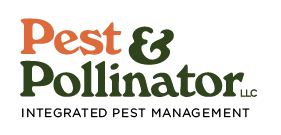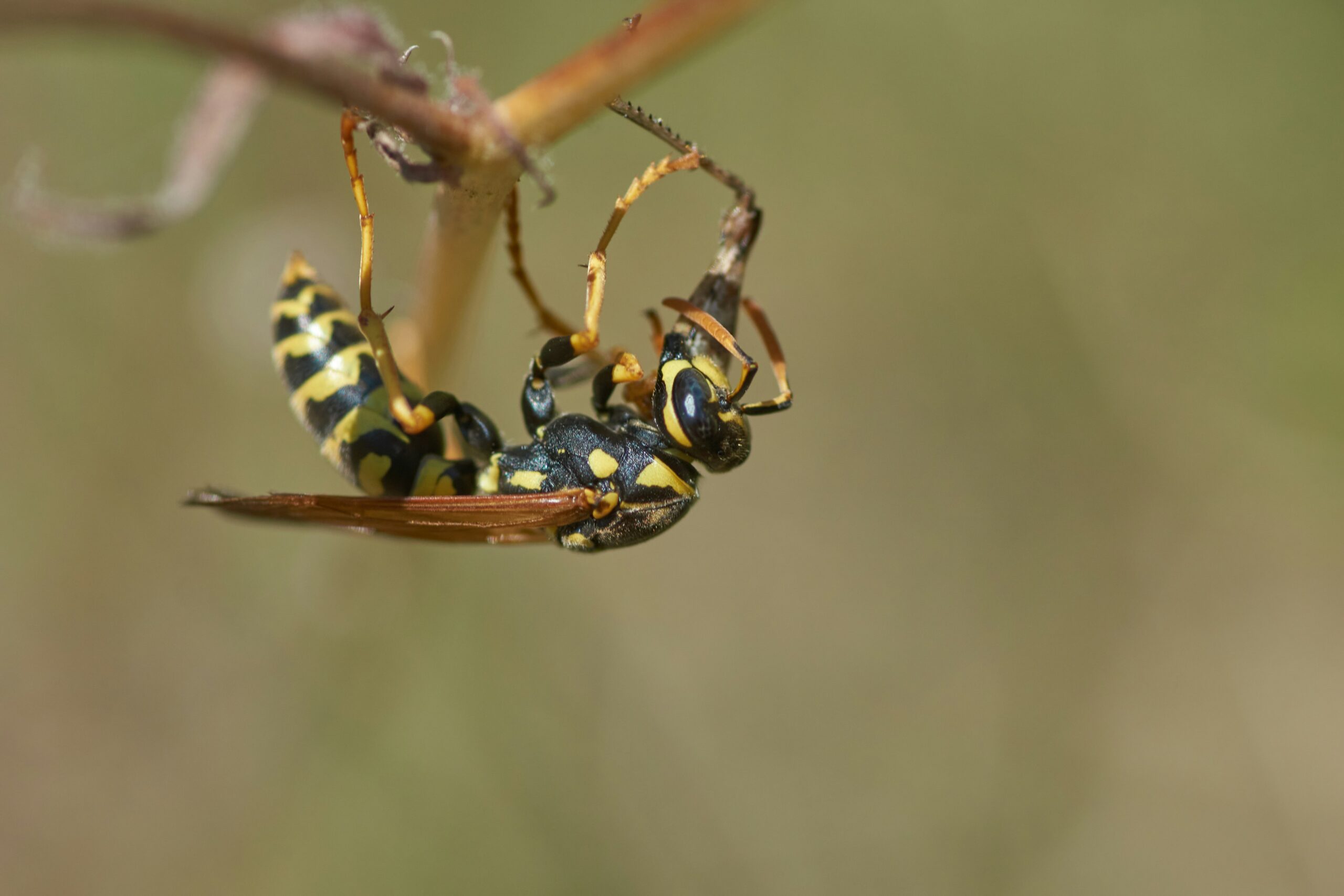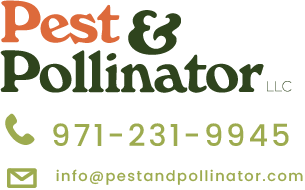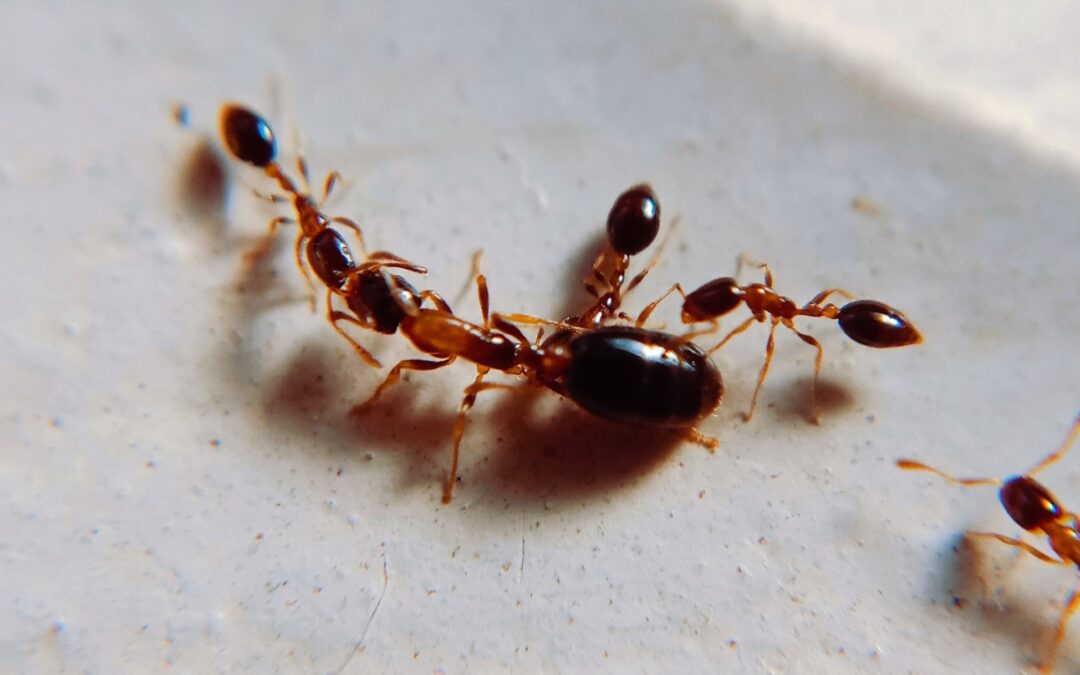Wondering how to get rid of a wasps nest naturally? This article answers common wasp treatment questions. So you can make the right decision to protect yourself, pollinators & the environment.
Hornet vs. Wasp
If you’re wondering whether you have a hornet, wasp, or yellow jacket, check out this great guide from OSU’s Solve Pest Problems website.
In general, in Portland hornets refers to bald faced hornets that make large softball–basketball sized nests in trees & shrubs.
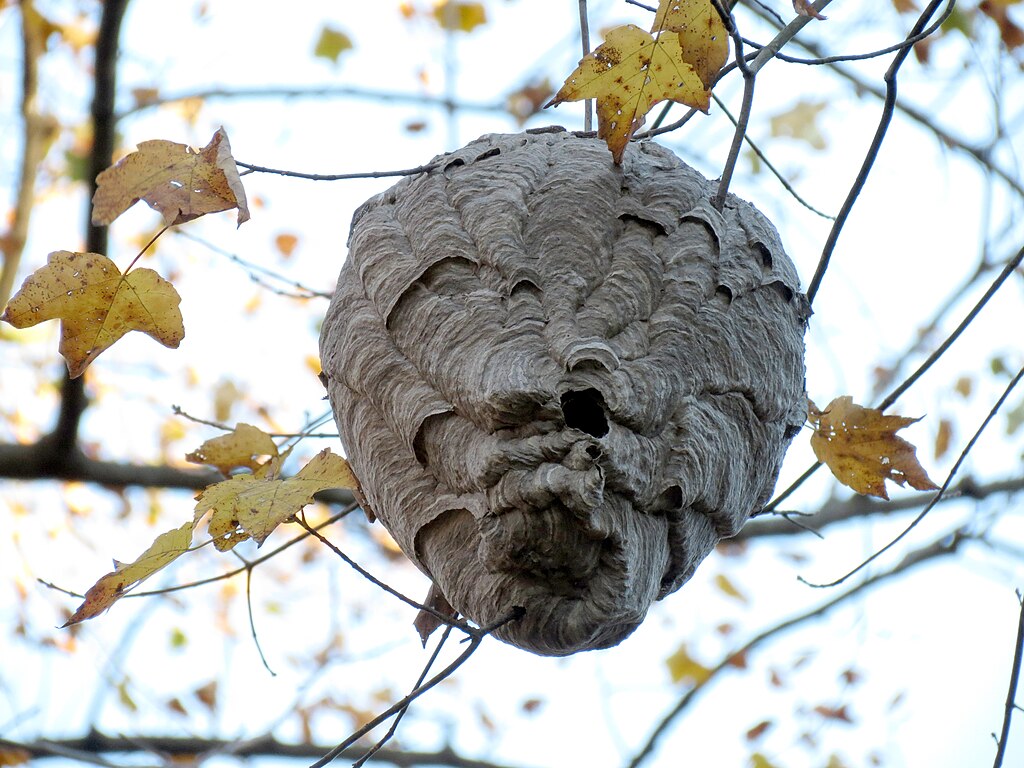
Bald-faced hornets nest (Dolichovespula maculata). Photo wikimedia commons, author Katja Schulz.
Yellow jackets (Vespula sp.)are usually the smaller than paper wasps & hornets. They have a stout body and classic black-and-yellow stripes you see as they buzz around your picnic.
Paper wasps (Polistes sp.) have narrow middle sections, and usually build their nests in eaves. Sometimes you will also find yellow jacket nests in soffits, although those might be aerial yellow jackets (Dolichovespula arenaria).
Wasps Nests in Eaves of House
Probably the top call for wasp pest control is paper wasps nesting in the eaves & soffits of homes. Many people, especially those with stinging insect allergies, are not tolerant of wasps nesting on their house.
Sometimes they will leave you alone, since paper wasps are generally docile except when threatened. But if you don’t want to (or can’t) take that chance, the best way to get rid of a wasp nest on your eave naturally is to scrape it off at night, or when the nest is vacant.
Remove wasps nest at your own risk. When dealing with wasps it’s always best to use a protective suit.
You could use a natural wasp repellent spray, as directed. But for wasps in soffits –depending on the height– sprays, aerosols & even foaming wasp killers applied overhead can drift onto you, nearby flowers, and create hazards for the ecosystem.
Help Me with Wasps!
How to Get Rid of YellowJackets in Soffit
Yellow jackets usually nest in the ground. When they nest inside a soffit– it can be difficult to remove. Yellow jackets can enter through any gap 1/8″ of larger, and love to nest in protected areas.
Wasps, yellow jackets and hornets nest in voids in eaves, soffits, fascia, dormers, and even under siding because these areas often warm up first & create inviting habitat.
Inspect these areas regularly, and caulk any gaps greater than 1/8″ in winter to prevent wasps in the Spring.
Again, you can spray natural wasp repellents along the areas where you see yellow jackets entering your soffit. But beware the hazards that both the yellow jackets, and the chemicals can create.
Choose a foaming spray if possible. Target the soffit void, spraying into the entry point. If using a liquid spray, open the nozzle for larger droplets, and use lower pressure to prevent drift from harming pollinators. Or apply diatomaceous earth (DE), or other natural dust product in the entry using a bellows duster.
Secure any ladders to prevent dangerous or deadly mishaps if you are startled by suddenly agressive yellow jackets.
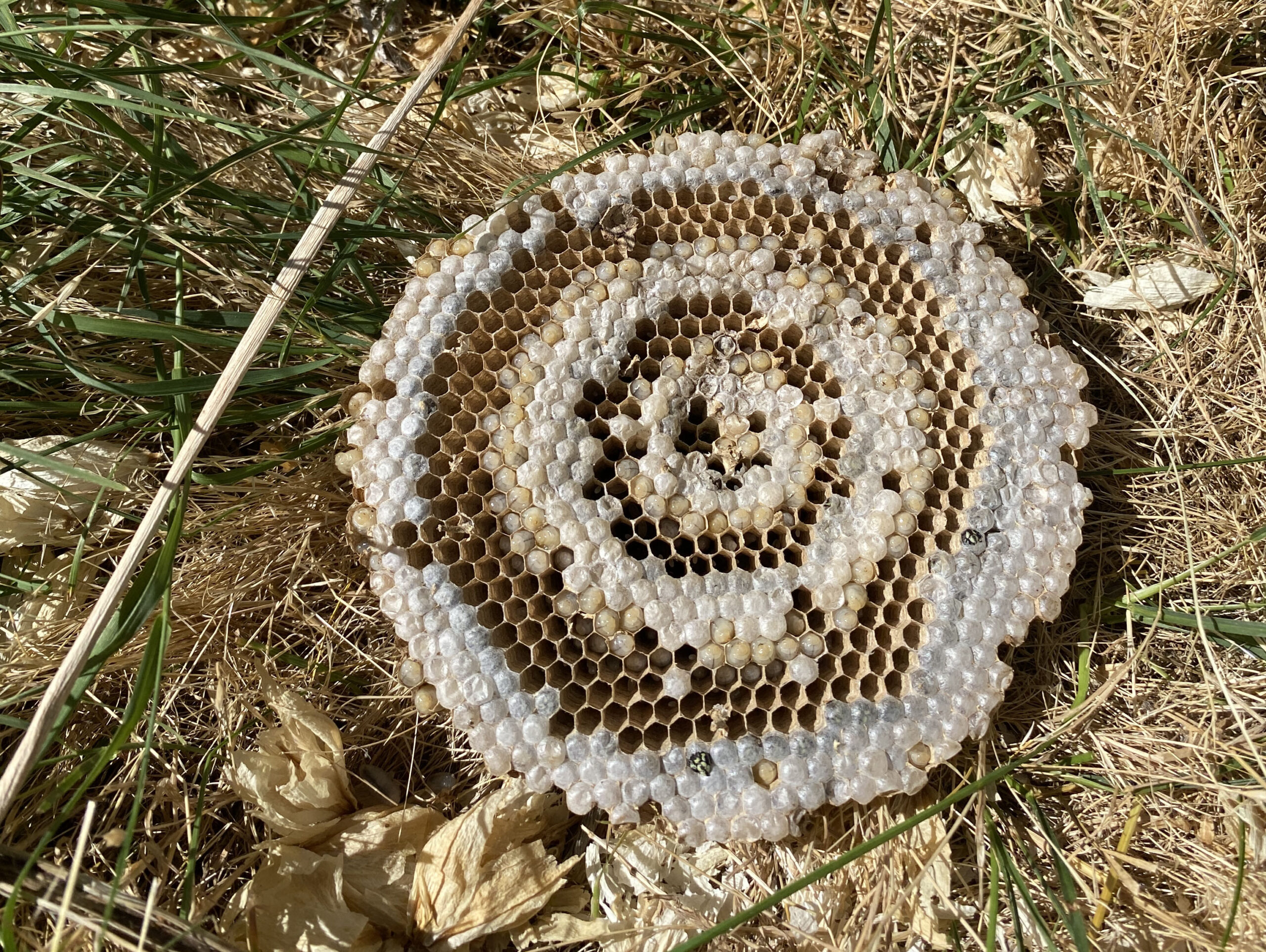
Wasp & Yellowjacket Control Facts & Tips:
- Yellowjackets have an excellent memory for food sources, and will return to forage even if there is no food there.
- Both paper wasps and yellowjacket nests start from a single queen, every year.
- Queens do not reuse the nest, but will sometimes build a new one right next to the old nest.
- Any yellowjacket and wasp control actions are best at night, while temperatures are lower and wasps are less active.
What Happens to Yellow Jackets When Nest is Destroyed?
Yellow jackets usually return to their nesting site even if it has been destroyed. This can make long-term control challenging. Especially later in the summer when their numbers can grow from several dozens to more than a hundred. For this reason, yellow jacket exterminators often use special chemicals that are designed to leave residues that stick to the insects and kill them.
But residual pesticides can show up in unexpected places and be hazardous to the environment.
With a knowledgable, and careful IPM approach, you can get rid of wasps without harsh chemicals. If you’re looking for help with natural wasp treatment in Portland OR, give us a call. We’ll use IPM to help you get rid of wasps naturally while protecting your family & the ecosystem.
Pest & Pollinator LLC is committed to our mission of helping the Portland OR community solve pest problems while reducing pesticides and protecting biodiversity.
